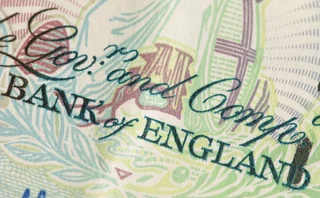
Record low HSCEI skew as Hong Kong markets boom
Call option volumes trebled in April as bourse hits multi-year highets boom

Call option interest outpacing the demand for puts on Chinese stocks has caused the volatility skew on the Hang Sang China Enterprise Index (HSCEI) to turn steeply negative and is reminiscent of 2007, when the market peaked before a precipitous fall.
HSCEI three-month 105–115% skew is at minus two volatility points following big market moves in the underlying index. Hong Kong's benchmark Hang Seng index (HSI) shot up 7.3% on April 9 before retreating but is still at a multi-year high of 27,000
Only users who have a paid subscription or are part of a corporate subscription are able to print or copy content.
To access these options, along with all other subscription benefits, please contact info@risk.net or view our subscription options here: http://subscriptions.risk.net/subscribe
You are currently unable to print this content. Please contact info@risk.net to find out more.
You are currently unable to copy this content. Please contact info@risk.net to find out more.
Copyright Infopro Digital Limited. All rights reserved.
As outlined in our terms and conditions, https://www.infopro-digital.com/terms-and-conditions/subscriptions/ (point 2.4), printing is limited to a single copy.
If you would like to purchase additional rights please email info@risk.net
Copyright Infopro Digital Limited. All rights reserved.
You may share this content using our article tools. As outlined in our terms and conditions, https://www.infopro-digital.com/terms-and-conditions/subscriptions/ (clause 2.4), an Authorised User may only make one copy of the materials for their own personal use. You must also comply with the restrictions in clause 2.5.
If you would like to purchase additional rights please email info@risk.net
More on Markets
Banks seek to advance predictive pricing models
AI and machine learning-based tools could give FX desks the power to forecast currency movements
After tariff rout, hedge funds revive euro rate steepeners
Dutch pension overhaul drives bets on euro rates curve steepening
Hedge funds burned as Hong Kong dollar bets implode
Carry trades and call spreads unwound after Trump tariffs pushed spot to edge of currency peg
What drove the Taiwan dollar surge?
Foreign speculators, carry unwinds and central bank inaction fuelled the 10% move, not just life insurers, say traders
Novel risk-off CTA strategy passes tariff test
Ai for Alpha’s defensive approach to trend following worked as planned in April turmoil
European investors ramp up FX hedging as ‘dollar smile’ fades
Analysts at one bank expect average hedge ratios to jump from 39% to 70% within six months
CLO market shakes off ETF outflows
Despite record redemptions, exchange mechanics and relatively small volumes cushioned impact
Pension funds hesitate over BoE’s buy-side repo facility
Reduced leveraged and documentation ‘faff’ curb appetite for central bank’s gilt liquidity lifeline







